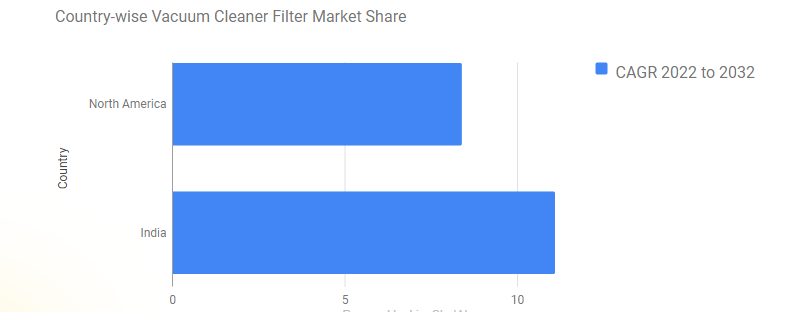The unassuming vacuum cleaner filter plays a crucial role in maintaining indoor air quality and protecting vacuum cleaner performance. This market, driven by rising health concerns and advancements in vacuum cleaner technology, is experiencing steady growth. Let’s delve into the applications of vacuum cleaner filter types and explore the factors propelling this market forward.
Get Exclusive Sample Copy of the Report: https://www.futuremarketinsights.com/reports/sample/rep-gb-16572
Applications: Filtering Beyond Dirt
Vacuum cleaner filters come in various configurations, each suited for specific purposes:
- Standard Dust Filters: These capture basic dust particles, hair, and debris, essential for maintaining general cleanliness.
- HEPA (High-Efficiency Particulate Air) Filters: HEPA filters capture a much wider range of particles, including allergens like pollen, dust mites, and pet dander. These are ideal for asthma and allergy sufferers.
- ULPA (Ultra-Low Penetration Air) Filters: Offering the highest level of filtration, ULPA filters capture even tinier particles like bacteria and viruses. These are often used in medical settings and cleanrooms.
- Water Filters: Some vacuum cleaners, particularly those designed for wet and dry applications, utilize water filters to trap dirt and debris while separating them from the cleaning water.
The global vacuum cleaner filter market was valued at USD 1,924.1 million in 2022 and is anticipated to grow at a robust CAGR of 9.3%, reaching approximately USD 4,670 million by 2032.
Growth Factors: A Breath of Fresh Air
The vacuum cleaner filter market is fueled by several key trends:
- Rising Awareness of Indoor Air Quality: Growing concerns about indoor air pollution, particularly allergens and pollutants, are driving the demand for HEPA and ULPA filters that improve indoor air quality by capturing these microscopic particles.
- Focus on Health and Wellness: The increasing focus on health and wellness is leading consumers to invest in air purifiers and high-filtration vacuum cleaners, which require high-quality filters for optimal performance.
- Advancements in Vacuum Cleaner Technology: The development of more powerful and feature-rich vacuum cleaners often necessitates improved filter technology to handle increased airflow and maintain efficiency.
- Pet Ownership Trends: The rising popularity of pet ownership creates a demand for filters that effectively capture pet hair, dander, and allergens, leading to increased sales of pet-specific filters.
- Durability and Replacement Needs: Vacuum cleaner filters are consumable items that require periodic replacement to maintain optimal performance. This ongoing need for replacements contributes to steady market growth.
Challenges and Considerations
Despite the positive outlook, the vacuum cleaner filter market faces some challenges:
- Consumer Education: Educating consumers about the different filter types and their benefits is crucial for driving demand for higher-filtration options like HEPA and ULPA.
- Balancing Filtration and Performance: High-filtration filters can sometimes restrict airflow, impacting vacuum cleaner performance. Manufacturers need to strike a balance between effective filtration and optimum suction power.
- Standardization and Compatibility: Ensuring compatibility between filters and different vacuum cleaner models is essential for consumer convenience and market growth.
Get Full Report Now: https://www.futuremarketinsights.com/checkout/16572





